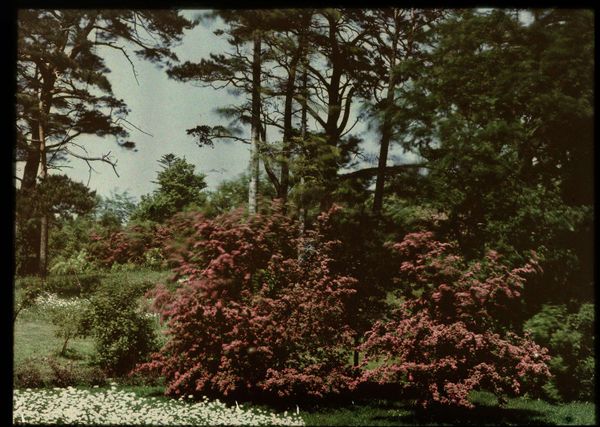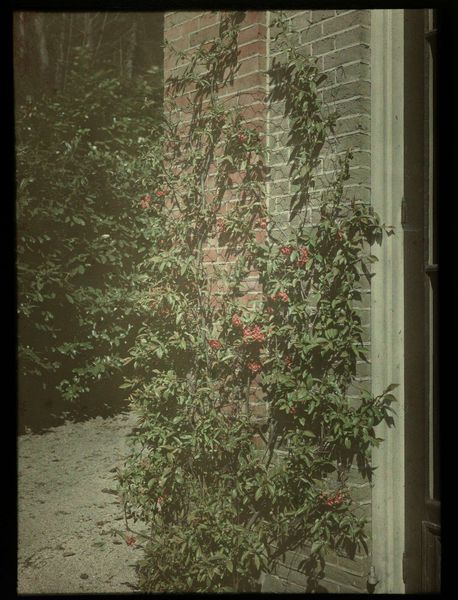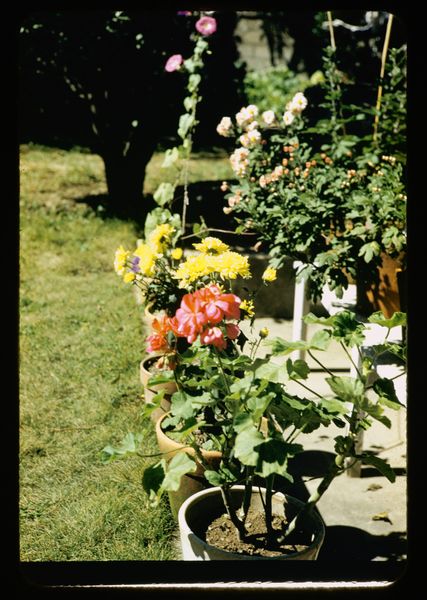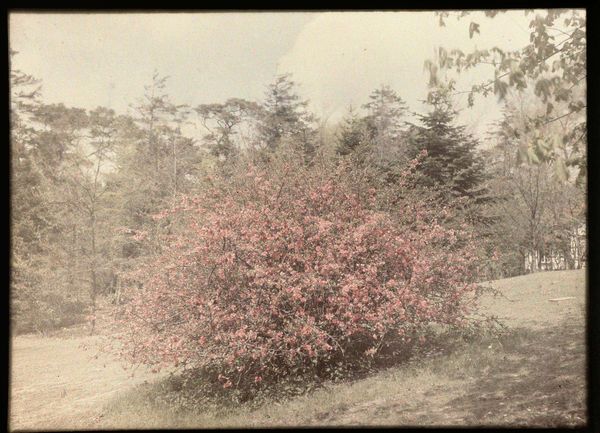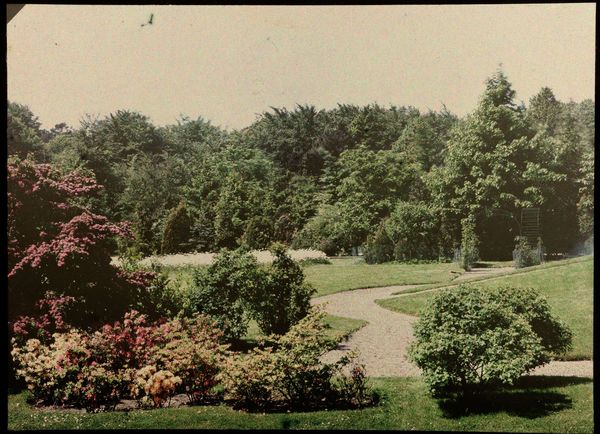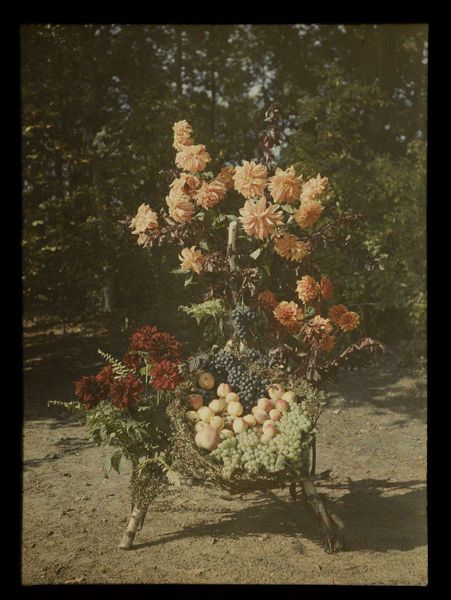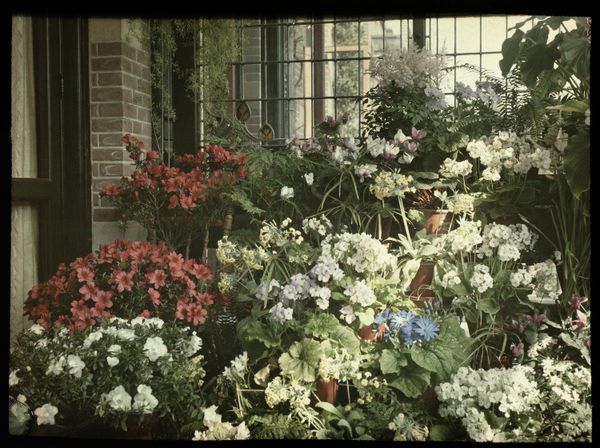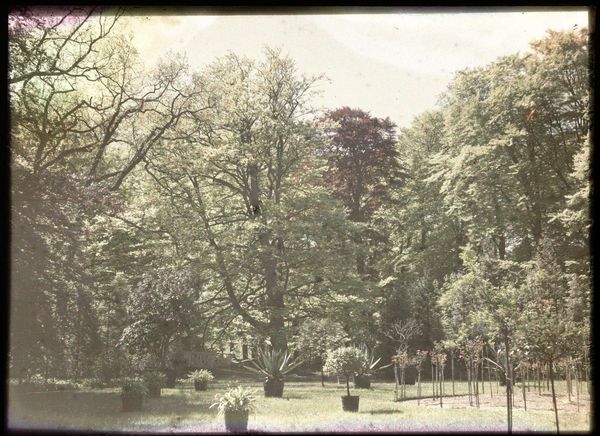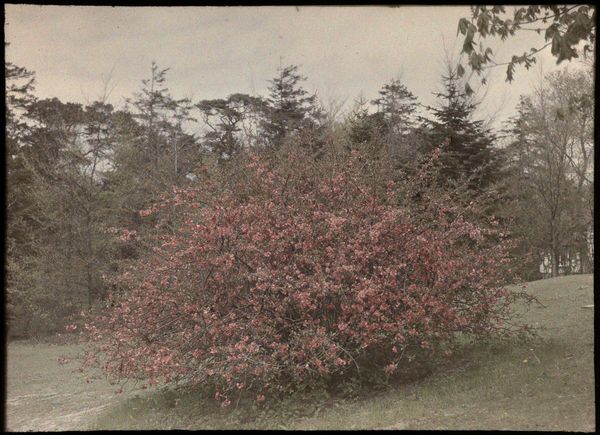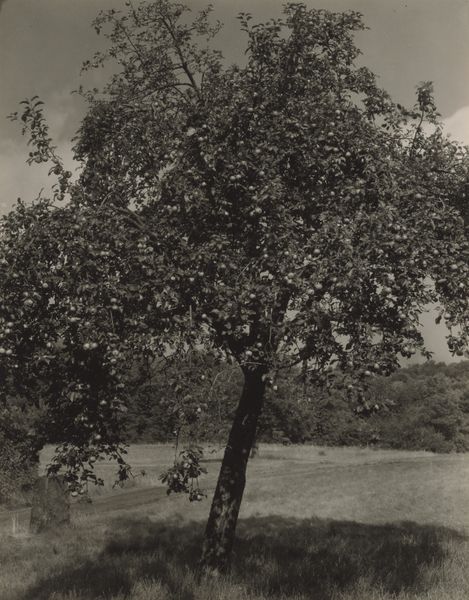
Gezicht in een park, met op de achtergrond een hond liggend op het gras 1907 - 1930
0:00
0:00
Dimensions: height 118 mm, width 89 mm
Copyright: Rijks Museum: Open Domain
Curator: Take a moment with Adolphe Burdet's "Gezicht in een park, met op de achtergrond een hond liggend op het gras," translating to "View in a park, with a dog lying on the grass in the background." It's believed this photo was taken sometime between 1907 and 1930. Editor: My first impression is how tranquil it seems, but something about it also feels… guarded? Maybe it’s the layering of the vegetation; everything feels framed. Curator: That guarded feeling resonates. Considering photography's place at the time, particularly how movements like Impressionism began embracing it, the choice of framing here is critical. Burdet could be suggesting how we engage with nature: through the lens of our social and cultural expectations. Editor: Precisely! Landscape art often serves as propaganda—to lay claim to land or invite people to partake in national identity, but the presence of the dog could bring viewers to relax or ease their senses. And the use of "plein-air," despite this being photography, speaks volumes about rejecting any established tradition of nature representation in that time. Curator: Definitely, but I feel like Burdet is drawing out our sense of observation as visitors to a park. Even today, a manicured green space carries socio-economic baggage, defining who has access to leisure and nature. This resonates so much today as public places get increasingly privatized. Editor: True. And viewing this through the prism of leisure in public spaces invites considering those absent. Were there barriers, visible or otherwise, influencing who enjoyed parks in Burdet’s time? Are these the parks and dogs accessible to all? The rosy bushes provide an innocent background scene but should never come without intersectionality. Curator: That critical lens is vital. Perhaps this work can encourage us to actively reflect on how we frame nature, and whose experiences are prioritized. Editor: Absolutely. Thinking about leisure critically reminds me we are capable of shifting that framing to consider access and how everyone can relish that tranquil sense we get from this artwork.
Comments
No comments
Be the first to comment and join the conversation on the ultimate creative platform.
